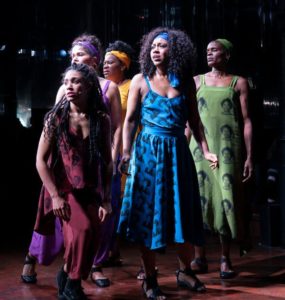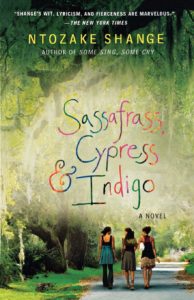I really enjoyed my presentation from last week primarily focusing on Black Macho and the Myth of the Black Superwoman by Michele Wallace. The themes that came up in this particular reading were issues that I’ve been researching and noticing for a while now. The thing that struck me the most was that the tension and the hostility between black men and women stems from 50 years ago during the civil rights movement.
The civil rights movement for many black people was supposed to be seen as solidarity between black men and black women trying to fight one cause, white supremacy. However, there were underlying issues such as the erasure of black womens’ importance in the movement. The main thing that I was especially fascinated about was black mens’ sudden preference for white women and their hate for black women. Due to the patriarchal norms of the 1950s, it seemed like the downplaying of black women’s role in the civil rights movement was also normalized into American society. The most interesting part was that many of the black men in the civil rights movement began dating white women that participated in the movement. Wallace made sure to delve deeper into the history of why black men began pursuing white women. Because black men were emasculated during slavery and reconstruction, they felt that it was an accomplishment or an achievement to have à white woman on their arm. This made him feel more like a man. I already knew the perfect video that would fit this situation, the Iyanla Fix My Life episode from three years ago that was supposed to help dispel the stereotype of the “angry black woman”. Iyanla Vanzant set the stage for a difficult conversation and the black men in the video let their hate for black women be known. I was not expecting that the same reasons that the black men used in the video from 2016 were the same reasons that black men used in 1979. It is honestly disappointing that 40 years later, we hear the same baseless excuses.
However, it makes sense why the same stereotypes are still being displayed today. Even though we have made some progress as a nation from the 60s and 70s, we still have a long way to go. Many of the same harsh realities of racism and discrimination still persist today in 2019. Although the excuses and stereotypes that that black men in the Iyanla video made were baseless and problematic, we still see a link between the men of the 60s versus the men of 2016. Black men are still being emasculated but in different ways than they were in the past. Therefore, they continue to push the same stereotypes of black women to still find a way to feel more masculine. As problematic as their statements are, it is important to see that we as a people are still facing the same harsh realities of racism and discrimination.



